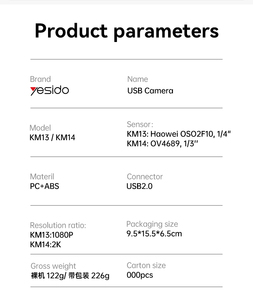
All categories
Featured selections
Trade Assurance
Buyer Central
Help Center
Get the app
Become a supplier

(3145 products available)





































Digital single-lens reflex cameras (DSLRs):
Manual Canon cameras include the Canon 5D and Canon EOS Rebel series. The Canon 5D is a full-frame digital SLR (DSLR) camera with high-resolution megapixels, advanced autofocus systems, and capabilities for professional photography. The Canon EOS Rebel series consists of a number of models targeted at amateur photographers and are generally smaller and more affordable than professional cameras. These DSLRs offer manual control options, interchangeable lenses, and digital image sensors, making them versatile for various photography styles.
Mirrorless Cameras:
In recent years, the introduction of the mirrorless camera system option has been gaining popularity. The Canon mirrorless cameras include the EOS R and EOS M series. Unlike DSLRs, mirrorless cameras do not have a mirror mechanism. As a result, they are generally lighter and more compact. Canon mirrorless models feature large image sensors, manual control, and connectivity options like Wi-Fi and Bluetooth.
Point and Shoot Cameras:
Manual Canon cameras also have a point-and-shoot option, which is an easy and convenient way to take pictures with little effort involved. Canon's PowerShot line includes both compact and Super Zoom models. The Super Zoom options can have optical zooms of 30x magnitudes of more or more, and some, like the Canon PowerShot SX740 HS, can shoot 4K videos.
While many of these cameras are regarded as beginner-friendly, some specific models offer more manual controls and features for the aspiring photographer. The Canon PowerShot G series is an example of a compact camera with a big sensor and manual options.
Cinema Cameras:
These cameras have been designed especially for professional filmmakers and videographers. Examples include Canon EOS C200 and EOS C300 Mark III. Their features include large image sensors, high resolutions, advanced color science, and multiple recording formats.
Like most cameras, Canon manual cameras have basic features and functions that help users take pictures and videos. These include;
Lens Mount
Manual Canon cameras have a lens mount, which is a mechanism for attaching a lens to the camera. The lens mount type can determine the compatibility between the camera body and lenses. Canon cameras use an EF and EF-S lens mount. Manual Canon cameras allow users to change lenses to suit the genre of photography they want to explore.
Manual Mode
As the name suggests, the manual Canon camera is operated mainly in manual mode. In this mode, the camera gives the user full control of the exposure settings. These include the aperture, shutter speed, and ISO. The manual mode allows the photographer to make adjustments to suit the shooting conditions.
Aperture Priority and Shutter Priority Modes
Aside from manual mode, Canon manual cameras also have aperture priority and shutter priority modes. The aperture priority mode allows the user to control the aperture size while the camera adjusts the shutter speed to keep exposure balanced. On the other hand, the shutter priority mode gives the user control of the shutter speed while the camera adjusts the aperture for proper exposure.
Interchangeable Lenses
Most Canon cameras have a kit lens. However, more advanced models give users the option of attaching various lenses, from wide-angle to telephoto lenses, to suit different shooting situations.
Viewfinder
Most manual cameras have a viewfinder, which is an essential component for framing shots. It allows users to see the scene being photographed as well as the camera settings. While many Canon manual cameras come with optical viewfinders, some models have digital viewfinders.
Flash Mount
Most manual cameras have a flash mount where the external flash unit can be attached. This allows users to increase the available light in a scene or for freezing motion during a photograph.
Mode Dial
The mode dial is an important feature in a Canon manual camera. It allows users to switch between different shooting modes, which include manual, aperture priority, shutter priority, and program mode.
Timer
Manual cameras also have a timer function, which allows the shutter to be released after a specified time period. The timer function can be used to take self-portraits or to prevent the camera from shaking when the shutter is released.
Tripod Mount
Manual Canon cameras have a tripod mount, which is a screw fitting on the camera body. It allows photographers to attach the camera to a tripod or monopod to achieve stable shots.
Many Industries and photography enthusiasts and professionals use the manual Canon camera in various applications:
Selecting a manual Canon camera can be challenging because there are various options. However, using the following tips to narrow down specific needs will simplify the process.
Q: What are the disadvantages of using a manual camera?
A: The process of taking pictures with a fully manual camera is longer. There is more detail that the photographer has to pay attention to. This could slow pictures down and may not work for the photographer in all situations.
Q: How to use a manual Canon camera?
A: Using a manual Canon camera involves turning on the camera and selecting the appropriate shooting mode. The photographer then sets the camera to take pictures using the three parts of exposure, which are aperture, shutter speed, and ISO.
Q: What are the benefits of using a manual camera?
A: There are many benefits to using a manual camera. These include increased creative control, learning opportunities, greater versatility, engagement, and better quality images.
Q: How long does it take to learn manual camera settings?
A: Learning how to use a manual camera well takes time and practice. Many photographers say it can take up to 6 months to become fully comfortable with using a manual camera.